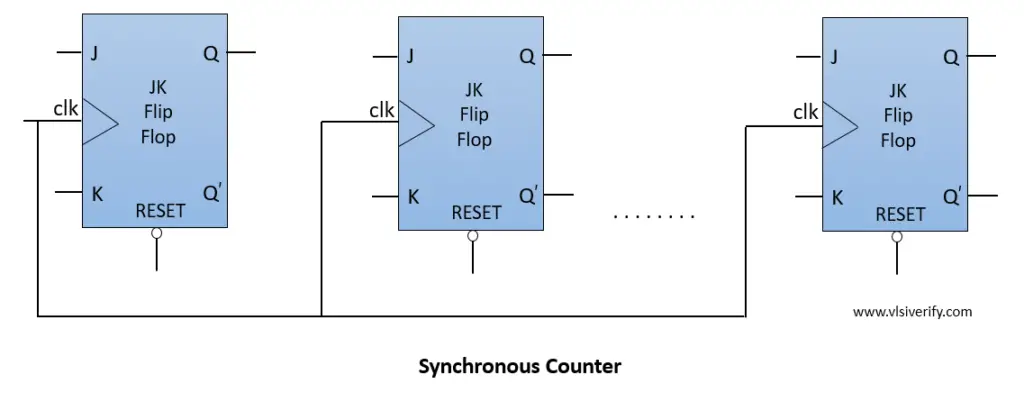Synchronous Counter
As we have discussed the asynchronous counter, output of one flip-flop stage is connected to the input clock pin of the next stage that introduces propagation delay. In a synchronous counter, all flip-flops within the counter are clocked together by the same clock which makes it faster when compared with an asynchronous counter. It is known as a parallel counter.
Block Diagram

4-bit Up-Down Synchronous Counter
module synchronous_counter #(parameter SIZE=4)(
input clk, rst_n,
input up,
output reg [3:0] cnt
);
always@(posedge clk) begin
if(!rst_n) begin
cnt <= 4'h0;
end
else begin
if(up) cnt <= cnt + 1'b1;
else cnt <= cnt - 1'b1;
end
end
endmoduleTestbench Code
module tb;
reg clk, rst_n;
reg up;
wire [3:0] cnt;
synchronous_counter(clk, rst_n, up, cnt);
initial begin
clk = 0; rst_n = 0;
up = 1;
#4; rst_n = 1;
#80;
rst_n = 0;
#4; rst_n = 1; up = 0;
#50;
$finish;
end
always #2 clk = ~clk;
initial begin
$dumpfile("dump.vcd"); $dumpvars;
end
endmoduleWaveform

Difference between synchronous and asynchronous counter
|
Asynchronous Counter |
Synchronous Counter |
|
In asynchronous counter, the output of one flip flop stage is driven to the clock input of the next stage. |
In the synchronous counter, the same clock is driven to all flip-flop stages |
|
Slower as compared to the synchronous counter |
Faster as compared to the asynchronous counter. |
|
It is also known as serial counter |
It is also known as parallel counter |
|
High propagation delay |
Propagation delay is less compared to the asynchronous counter. |
Verilog Codes